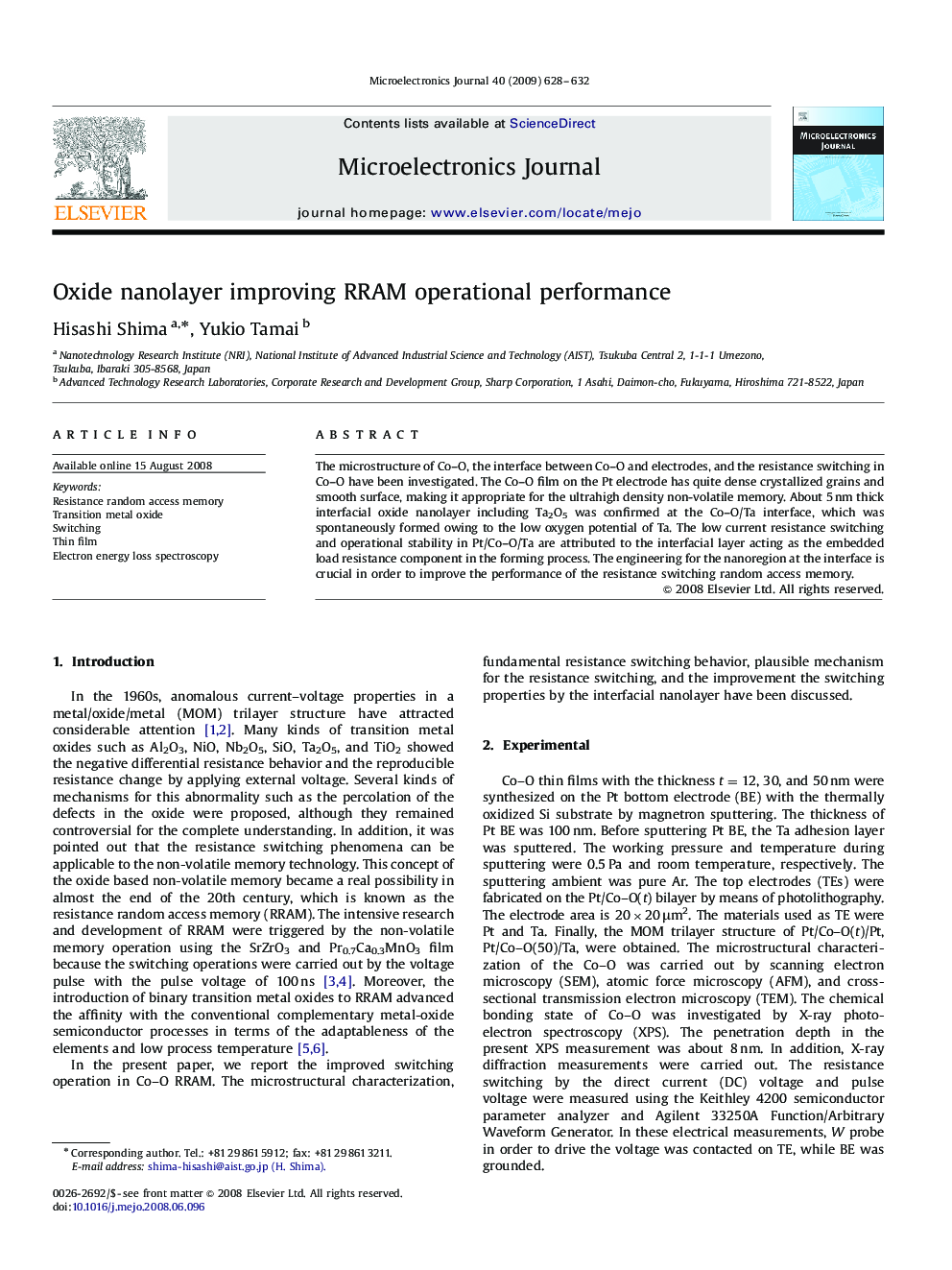| Article ID | Journal | Published Year | Pages | File Type |
|---|---|---|---|---|
| 542509 | Microelectronics Journal | 2009 | 5 Pages |
The microstructure of Co–O, the interface between Co–O and electrodes, and the resistance switching in Co–O have been investigated. The Co–O film on the Pt electrode has quite dense crystallized grains and smooth surface, making it appropriate for the ultrahigh density non-volatile memory. About 5 nm thick interfacial oxide nanolayer including Ta2O5 was confirmed at the Co–O/Ta interface, which was spontaneously formed owing to the low oxygen potential of Ta. The low current resistance switching and operational stability in Pt/Co–O/Ta are attributed to the interfacial layer acting as the embedded load resistance component in the forming process. The engineering for the nanoregion at the interface is crucial in order to improve the performance of the resistance switching random access memory.
